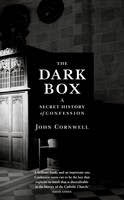This book provides a thorough examination of the role of
Confession in the history of the Catholic Church, and of the Confessional in
particular.
The preface lays out the bias of the author; a
cradle-Catholic, and ex-seminarian who has had personal experience of the sacrament
being abused. He describes personal struggles with performing confession as a
child and youth, and very much sets the tone for the rest of the work.
The first section of the book gives a detailed and highly
informative potted history of the role of confession in Christian history. From
communal out pouring of public guilt and shame during the middle ages, to more
minute examinations of the individual's soul throughout the
Counter-Reformation. There are some fascinating insights into the role of
Confessor in the lives both of ordinary Catholics and of noted holy mystics; my
personal favourite comment related to St Theresa of Avila being advised to 'get
out more' when she confronted her new confessor with her latest round of hallucinatory
visions.
From here the book delves into the tightening of rules
surrounding confession during the late 18th and early 19th century. The focus
is largely on the lowering of the age for first confession and on the impact
that stern ideas of sin and a vengeful God had on generations of immature child
Catholics. The conditions and Rule of the Seminaries is examined, with the
strict removal of outside influences being seen as an insurmountable bar to
future Confessors' abilities to make sense of or deal with the actual world.
Pius X comes in for severe criticism throughout this section, with both his
methods and his motivation being questioned.
The final section of the book examines the abuses of the
Confessional; both of a sexual and of an emotional nature. It is not clear if
Cornwell feels that the Confessional acted to inhibit or promote sexual abuses
during the mid 20th Century. On one hand the separation from the congregation
as a whole, and genuine fear of 'the dark box' comes into play, but on the
other the move away from using the confessional into more personally private
spaces is seen as an opportunity for predatory individuals to groom and abuse
their victims. The use of confession as a tool for reconciling the abusers to
their own misdeeds is made clear; while the shameful role of the administration
and the Vatican offices in particular in making inappropriate use of the seal
of confession is listed as a contributing factor in much of the abuse.
The author contacted many individuals from both the laity
and from holy orders, for their own experiences of confession. There were a
variety of views expressed; everything from being brought back into the fold by
a kindly worldly priest who was capable of giving good council, to horrific
stories of abused children being given penance for the acts that had just been
forced upon them by their abusers.
The vast majority of the criticism against the form of
Confession used during much of the 20th Century falls to the reforms of Pius X,
and in turn to the intransigent and unforgiving actions and pronouncements of
his predecessors, most notably John Paul II.
This is not a feel good book by any stretch of the
imagination. Most of the book is focused on the opportunities for abuse offered
by the form this sacrament took following Pius X's reforms, and there are some
harrowing stories on abuse recounted. However it is a comprehensive, well
researched, look at the experience of confession for actual people.

This comment has been removed by a blog administrator.
ReplyDelete